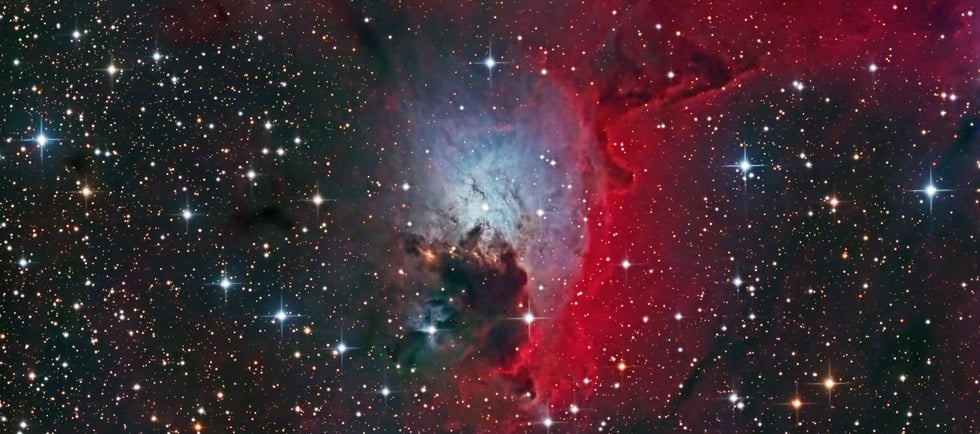NGC 2626: A Blue Reflection Nebula


Introduction to NGC 2626
NGC 2626 is a captivating blue reflection nebula located in the southern part of the Milky Way galaxy. This celestial object is characterized by its stunning hues, primarily due to the scattering of light from surrounding stars. As we delve into the depths of this nebula, we uncover the intricate details of its structure and the phenomena occurring within its vicinity.
The Surrounding Environment: RCW 27 and the Vela Molecular Ridge
At the heart of NGC 2626 lies a majestic large H II region known as RCW 27. This area is a vibrant zone of star formation, where new stars are born from the interstellar gas and dust. The nebula is enveloped by reddish hydrogen emissions, creating a stark contrast against the blue hues of the reflection nebula. Encompassed by a complex of dusty molecular clouds designated as the Vela Molecular Ridge, NGC 2626 stands as a beacon of stellar activity amidst the cosmic darkness.
Distance and Observation
Located approximately 3,200 light-years away from Earth, NGC 2626 presents a unique opportunity for astronomers and stargazers alike. This distance places it within our cosmic neighborhood, allowing for detailed observation with various telescopes. The nebula's obscuring dust cloud often adds to its mysterious allure, and observers are drawn to its exquisite colors and the intricate interplay of light and shadow.
The exploration of NGC 2626 gives us insight into the processes governing star formation and the evolution of nebulae within our galaxy. By studying such celestial phenomena, we enhance our understanding of the universe and our place within it. Each observation of NGC 2626 not only illuminates the beauty of this blue reflection nebula but also uncovers the ongoing dance of creation and destruction that defines the cosmos.
